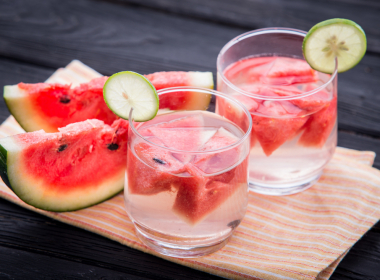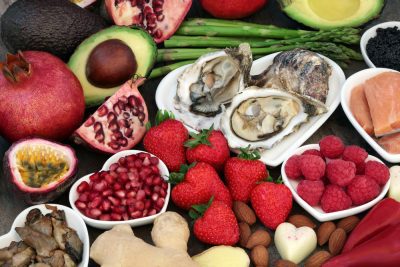Science reveals how certain foods can dramatically improve skin health from the inside out
The connection between diet and skin appearance has moved beyond anecdotal evidence into solid scientific territory. While topical treatments remain essential, skin specialists increasingly recognize that true skin transformation begins internally. Research consistently shows that specific nutrients directly impact collagen production, inflammation levels, and cellular repair mechanisms – all crucial factors in maintaining youthful skin.
Unlike trendy, expensive serums that promise miracle results, these everyday foods deliver proven benefits through their natural compounds. Many skin experts have incorporated these items into their own diets after witnessing firsthand how nutrition fundamentally alters skin health. Their professional and personal experiences align with mounting research confirming these foods’ efficacy.
Here’s an insider look at six foods skin specialists frequently consume to maintain their own youthful complexions and why each deserves a permanent place in your grocery cart.
Fatty fish rich in omega-3s
Skin experts prioritize salmon, mackerel, and sardines in their diets for good reason. These cold-water fish contain concentrated amounts of omega-3 fatty acids that serve as building blocks for healthy cell membranes. When cell membranes function optimally, they better retain moisture – nature’s most effective anti-aging strategy.
The specific omega-3s found in fatty fish help regulate oil production and reduce inflammatory compounds that trigger conditions like acne, eczema, and psoriasis. Perhaps most impressively, these fats strengthen the skin barrier, protecting against environmental damage while supporting the skin’s natural repair processes.
Aim for two to three servings weekly to notice improvements in skin hydration, elasticity, and overall resilience. If you don’t consume fish, consider algae-derived omega-3 supplements, which provide similar benefits without the oceanic source.
Beyond immediate skin benefits, regular fatty fish consumption has been linked to protection against UV damage – essentially providing a dietary form of sun protection (though this never replaces conventional sunscreen).
Vibrant berries packed with antioxidants
Blueberries, strawberries, raspberries, and blackberries represent defensive powerhouses against skin aging. Skin experts regularly consume these colorful fruits because they contain some of the highest antioxidant concentrations in the food supply.
Berries provide compounds like anthocyanins that neutralize free radicals – unstable molecules that damage collagen and accelerate aging. By quenching these harmful compounds, berries effectively slow down the internal processes that lead to wrinkles, fine lines, and skin laxity.
Research demonstrates that berry consumption increases blood flow to skin tissues, delivering oxygen and nutrients while removing waste products more efficiently. This improved circulation creates the foundation for that coveted healthy glow.
For maximum benefit, skin specialists typically consume a half-cup serving of mixed berries daily, often incorporated into breakfast routines. Frozen varieties offer equal nutritional value when fresh options aren’t available or practical.
The vitamin C found abundantly in berries also supports collagen synthesis – the protein responsible for skin’s structural integrity and bounce. Regular consumption helps maintain existing collagen while encouraging new production.
Avocados and their skin-friendly fats
The monounsaturated fats in avocados provide fundamental building materials for skin cell membranes. These healthy fats help skin cells maintain their structure and ability to hold moisture – essential for plump, youthful-looking skin.
Skin experts incorporate avocados into their diets because they contain unusually high concentrations of lutein and zeaxanthin. These carotenoids improve skin elasticity and protect against UV-induced damage at the cellular level.
The vitamin E in avocados works synergistically with vitamin C to defend against oxidative stress, essentially creating an internal shield against environmental aging factors. This partnership between nutrients exemplifies how whole foods offer complex benefits that isolated supplements cannot replicate.
Additionally, avocados deliver B vitamins necessary for cellular energy production, ensuring skin cells have the vitality needed for repair and regeneration. Even the minor trace minerals found in avocados contribute to enzymatic reactions crucial for maintaining skin health.
Many skin specialists consume one-quarter to one-half avocado daily, often incorporated into lunch salads or morning toast. This consistent intake helps maintain steady levels of skin-supporting nutrients.
Green tea for cellular protection
Green tea consumption represents a cornerstone habit among skin experts focused on internal anti-aging strategies. The catechins found in green tea – particularly epigallocatechin gallate (EGCG) – demonstrate remarkable ability to protect cellular DNA from damage while reducing inflammation.
Regular green tea drinkers show measurable differences in skin elasticity, roughness, scaling, and water-holding capacity compared to non-drinkers. These benefits stem from green tea’s ability to regulate hormones that affect skin appearance and its power to neutralize free radicals before they can damage skin proteins.
Many skin specialists consume two to three cups daily, often replacing other caffeinated beverages. Some prefer brewing loose-leaf varieties which typically contain higher catechin concentrations than bagged options.
Research indicates that green tea compounds accumulate in the skin over time, creating a reservoir of protective substances that help shield against both UV damage and everyday environmental stressors. This cumulative protection represents one of green tea’s most valuable but underappreciated skin benefits.
The L-theanine in green tea also helps regulate stress hormones like cortisol, which when elevated can accelerate skin aging through multiple pathways. By maintaining hormonal balance, green tea indirectly supports skin health beyond its direct antioxidant effects.
Tomatoes and their photoprotective lycopene
Tomatoes earn their place in skin-focused diets through their rich lycopene content. This carotenoid pigment provides tomatoes their red color while offering remarkable photoprotective properties for human skin.
Skin experts regularly consume tomatoes because lycopene accumulates in skin cells, where it absorbs and neutralizes free radicals created by UV exposure. Research shows that consistent tomato intake increases the skin’s natural SPF by approximately 33% over time – not enough to replace sunscreen but significant enough to enhance overall protection.
Interestingly, lycopene becomes more bioavailable when tomatoes are cooked or processed. This explains why many skin specialists incorporate tomato paste, sauce, or roasted tomatoes into meals rather than relying solely on raw varieties.
The combination of vitamins A, C, and K in tomatoes further supports skin health by encouraging cell turnover, collagen synthesis, and proper blood clotting for healing. This nutrient profile makes tomatoes particularly valuable for addressing uneven skin tone and texture issues.
Many skin experts aim for daily tomato consumption in some form, recognizing that consistency delivers more dramatic benefits than occasional intake. The protective effects accumulate over weeks of regular consumption.
Dark chocolate as a skin-saving indulgence
Quality dark chocolate with high cocoa content (70% or greater) has earned legitimate status as a skin-supportive food. The flavanols in cocoa demonstrate scientifically verified benefits for skin blood flow, hydration, and protection against sun damage.
Skin specialists who include small amounts of dark chocolate in their diets point to research showing improved skin density, hydration, and smoothness among regular consumers. These effects stem from cocoa’s ability to increase blood flow to the skin’s outer layers while reducing inflammation and oxidative damage.
The specific antioxidants in cocoa help protect collagen and elastin from breaking down, effectively preserving skin’s structural proteins against everyday stressors. These compounds also appear to reduce the inflammatory response to UV exposure, potentially limiting long-term photodamage.
Many skin experts consume about one ounce of high-quality dark chocolate several times weekly. This moderate approach delivers skin benefits without excess calories or sugar that could potentially counteract positive effects.
Research indicates that the skin benefits from chocolate consumption become measurable after approximately 12 weeks of consistent intake. This timeline highlights the importance of viewing food as a long-term skin investment rather than expecting immediate results.
Consistency creates visible results
While incorporating these six foods represents a science-backed approach to skin health, timing and consistency prove equally important. Skin specialists emphasize that occasional consumption delivers minimal benefits compared to regular intake that maintains steady nutrient levels in skin tissues.
These foods work through multiple mechanisms – providing antioxidant protection, supporting cellular membrane integrity, enhancing circulation, reducing inflammation, and supplying building blocks for structural proteins. This multi-pathway approach explains why dietary intervention often succeeds where single-ingredient topical products fail.
Research demonstrates that visible improvements typically emerge after 8-12 weeks of consistent dietary changes. This timeline aligns with skin’s natural regeneration cycle and reflects how long internal changes take to manifest visibly.
Many skin experts combine these foods with adequate hydration, emphasizing that proper water intake amplifies the benefits of nutrient-rich foods. Hydration supports the transport systems that deliver nutrients to skin cells while facilitating waste removal.
The beauty of this food-based approach lies in its simplicity and sustainability. Unlike complicated skincare routines requiring multiple products and precise application techniques, incorporating these foods requires minimal effort while delivering consistent benefits.
By viewing your grocery cart as an extension of your skincare regimen, you adopt the perspective that many skin specialists embrace – recognizing that lasting beauty emerges from internal nourishment rather than external quick fixes.

















